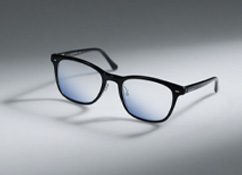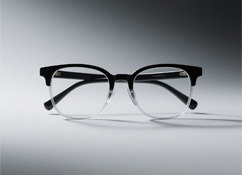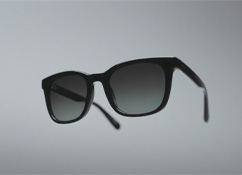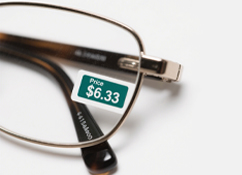Myopia (nearsightedness) is a common refractive error affecting over 30% of the global population. For many, glasses or contact lenses are daily companions—but advances in refractive surgery now offer a more permanent solution. Two primary procedures dominate the field: corneal laser correction (reshaping the cornea) and ICL intraocular lens implantation (adding a permanent lens). But how do they work, and which is right for you?
Corneal laser correction uses precision lasers to reshape the cornea—the eye’s outermost lens—so it bends light correctly onto the retina, eliminating the need for glasses. The three most widely used techniques are:
A minimally invasive, fully laser procedure that uses a 2mm incision to remove a small corneal lenticule. It preserves more healthy tissue than other laser methods.
Often called "half-femtosecond," this method uses a femtosecond laser to create a thin corneal flap, then an excimer laser to reshape the underlying tissue. It’s a tried-and-true option for a wide range of prescriptions.
A "no-touch" laser procedure that skips the flap and instead removes the corneal epithelium (surface layer) directly before reshaping the cornea. Ideal for people with thin corneas or a fear of flap-related complications.
ICL implantation is a reversible procedure that inserts a custom prescription lens (ICL) between the iris and your natural lens—like a permanent contact lens that never needs removal. It doesn’t alter the cornea, making it a game-changer for those ineligible for laser surgery (e.g., thin corneas, high myopia).
Dr. Emily Song, Associate Director of the Refractive Optometry Center at New York Presbyterian Hospital, stresses: "A comprehensive pre-op exam is non-negotiable. We need to check corneal thickness, anterior chamber depth (the space between the cornea and lens), and overall eye health to confirm eligibility—and match you to the best procedure."
The anterior chamber depth (2.8–3.5mm is normal) and corneal thickness are key factors your surgeon will evaluate. Below’s a breakdown of each procedure:
- Pros: Minimally invasive 2mm incision, fast 1–3 day recovery, excellent visual quality, and lower dry eye risk than FS-LASIK.
- Cons: Not ideal for pure astigmatism or hyperopia (farsightedness); less flexibility for retreatment than FS-LASIK.
- Eligibility: Corneal thickness ≥500μm; myopia up to -8.00D (800 degrees); astigmatism up to -5.00D (500 degrees); stable prescription for 2 years.
- Pros: Wider correction range (ideal for thin corneas, high myopia, or severe astigmatism), faster visual recovery than TransPRK, and easier retreatment if needed.
- Cons: Highest risk of post-op dry eye (avoid if you have pre-existing severe dry eye); small risk of flap complications (e.g., dislocation).
- Eligibility: Corneal thickness ≥450μm; myopia up to -12.00D (1200 degrees); astigmatism up to -6.00D (600 degrees); stable prescription for 2 years.
- Pros: No corneal flap (eliminates flap-related risks), suitable for thin corneas or high-risk jobs (e.g., athletes), and no risk of flap displacement.
- Cons: Longer recovery (3–5 days of discomfort/blurred vision), higher risk of post-op haze (rare with modern lasers), and more dry eye than SMILE.
- Eligibility: Corneal thickness ≥450μm; myopia up to -6.00D (600 degrees); astigmatism up to -3.00D (300 degrees); stable prescription for 2 years.
- Pros: Corrects myopia up to -18.00D (1800 degrees); ideal for thin corneas, irregular corneas, or laser-ineligible patients; reversible (lenses can be removed/replaced).
- Cons: Higher cost than laser surgery; small risk of complications (e.g., cataract formation, elevated eye pressure); requires a small eye incision.
- Eligibility: Anterior chamber depth ≥2.8mm; myopia up to -18.00D (1800 degrees); stable prescription for 2 years.
Myopia surgery isn’t for everyone—even with a matching prescription, other factors can disqualify you.
The ideal age is 18–50 with a stable prescription (≤0.50D change in 2 years). Under 18, eyes are still developing—myopia may progress. Over 50, presbyopia (age-related farsightedness) or cataracts can reduce results.
You cannot get laser surgery if you have:
- Severe dry eye syndrome (uncontrolled with drops)
- Keratoconus (or family history of it)
- Uncontrolled diabetes or autoimmune diseases (e.g., lupus)
- Active eye infections or inflammation
- Thin corneas (<450μm for FS-LASIK/TransPRK)
- Unstable myopia (changing prescription)
Surgery corrects your current vision—but it doesn’t "cure" the tendency to develop myopia. Poor habits can reverse results or cause new issues. Avoid these:
- Excessive Close-Up Work: Follow the 20-20-20 rule (20 seconds looking 20 feet away every 20 minutes) to reduce eye strain.
- Eye Trauma: For laser surgery, the corneal flap/healed epithelium takes ~1 month to stabilize. Skip contact sports (boxing, basketball) and high-impact activities.
- Poor Hygiene: No eye makeup for 1 month; no contact lenses for 3 months; avoid swimming (3 months) or diving (1 year) to prevent infection.
- Irritants: Skip smoking, alcohol, and spicy food for 1 month—these dry out eyes and delay healing. Use preservative-free drops as prescribed.
Dr. Michael Zhai, Director of the Refractive Surgery Center at New York Presbyterian Hospital, adds: "Post-surgery, you still need to protect your eyes. Overusing them or skipping follow-ups can lead to new myopia and vision decline."
Remember: Myopia surgery is a correction, not a cure. Good eye habits—like limiting screen time, wearing UV protection, and getting annual exams—are key to keeping your results long-term!}












